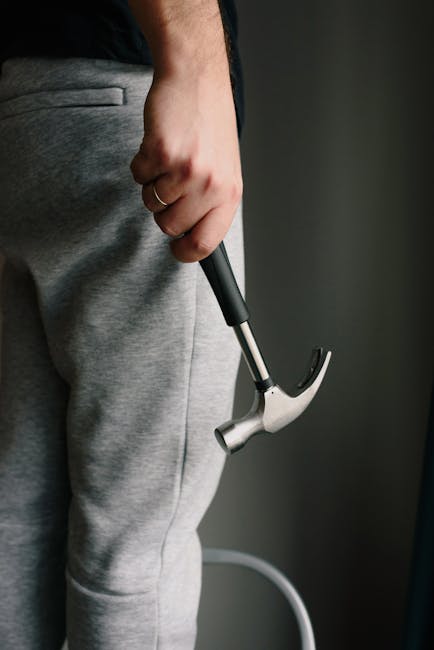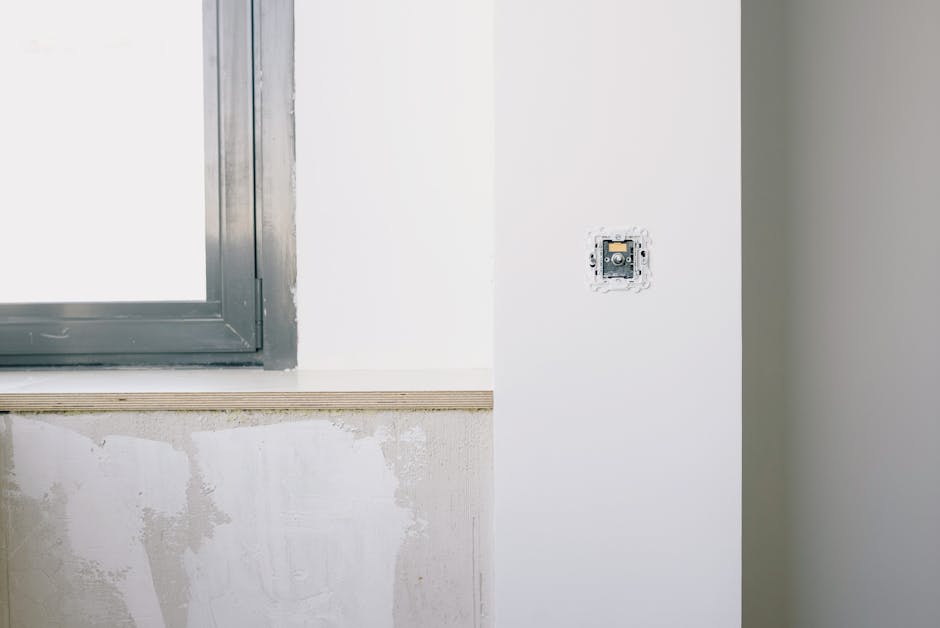Cara Memperbaiki Regulator Gas Bocor Dan Longgar Menjadi Seperti Baru #regulatorgas

Cara Memperbaiki Regulator Gas Bocor Dan Longgar Menjadi Seperti Baru #regulatorgas
Ah, the dreaded hissing sound. That faint, yet insistent whisper of escaping gas. It's enough to make even the most seasoned home cook pause mid-stir-fry and feel a sudden chill. A leaky gas regulator. It's not just annoying; it's potentially dangerous. But before you reach for the phone and summon a gas technician (which is always a good, safe option, by the way), let's explore how you can potentially fix that leaky and loose regulator yourself, transforming it back to its former, tightly-sealed glory. Because who doesn't love a little DIY and saving a few bucks? Just remember, safety first! Gas is nothing to mess around with lightly.
Understanding the Culprit: Why Regulators Leak and Loosen

Before we dive into the repair process, let's understand why these regulators decide to go rogue in the first place. Think of it like diagnosing a quirky old car. Knowing the potential problems makes the fix that much easier.
1. Worn-Out Rubber Seals: These are the usual suspects. Over time, the rubber seals inside the regulator can dry out, crack, or become brittle. This is especially true if you live in an area with extreme temperature fluctuations. Think of them like the gaskets on a car engine – eventually, they just give way. These are the main culprits in leaking regulators.
2. Loose Connections: Sometimes, the simplest explanation is the right one. The connection between the regulator and the gas cylinder, or between the regulator and the hose, might simply be loose. Vibration, accidental bumps, or just the general passage of time can cause these connections to weaken.
3. Dirt and Debris: Tiny particles of dust, grease, or other debris can find their way into the regulator, interfering with the proper sealing of the internal components. Imagine trying to seal a Ziploc bag with a few grains of sand stuck in the zipper – not gonna happen.
4. Damaged Regulator Body: In rarer cases, the regulator body itself might be damaged. This could be due to a physical impact, corrosion, or a manufacturing defect. This requires either repair with specialized equipment or regulator replacement.
5. Over-Tightening: Believe it or not, sometimes "more" isn't better. Over-tightening the regulator onto the cylinder can actually damage the seals or the threads, leading to leaks. It's a delicate balance.
Safety First: Preparing for the Repair

Okay, you've identified the potential cause. Now, let's get ready for the operation. Safety is paramount here. We're dealing with flammable gas, not lukewarm tap water.
1. Work in a Well-Ventilated Area: Open windows and doors to ensure plenty of fresh air. Avoid working in enclosed spaces where gas fumes can accumulate. Picture this: you want to be outside on a breezy summer day, not trapped in a submarine.
2. No Open Flames or Sparks: This should be obvious, but it's worth repeating. Keep away from open flames, cigarettes, lighters, or anything that could potentially ignite the gas. Turn off all electronic devices in the immediate vicinity, just to be extra cautious.
3. Turn Off the Gas Supply: This is absolutely crucial. Turn off the gas supply at the cylinder valve. Then, disconnect the regulator from the cylinder and the gas hose if possible, depending on the location of the leak. You'll need to disconnect in most instances to be able to fix the leak.
4. Have a Fire Extinguisher Nearby: It's always a good idea to have a fire extinguisher readily available in case of an emergency. Make sure it's a Class ABC extinguisher, which is suitable for all types of fires.
5. Wear Safety Gloves: Protect your hands from any potential contaminants or sharp edges by wearing a pair of safety gloves.
6. Prepare Your Tools: Depending on the repair, you might need a wrench, screwdriver, pliers, sealant tape (Teflon tape), and possibly a replacement rubber seal. Have everything organized and within easy reach.
The Repair Process: A Step-by-Step Guide

Alright, safety briefing complete! Time to get our hands dirty (metaphorically speaking, hopefully). Here's a step-by-step guide to fixing that leaky regulator:
1. Inspect the Connections: Start with the basics. Check the connections between the regulator and the gas cylinder and between the regulator and the hose. Use a wrench to tighten any loose connections. Don't overtighten; just make sure they're snug.
2. Check for Bubbles: If the leak persists, mix a solution of soapy water (dish soap works great) and apply it to all the connections and the regulator body. Look for bubbles forming, which indicates the source of the leak. It's like hunting for treasure, only the treasure is a tiny, escaping gas molecule.
3. Replace the Seal Tape (Teflon Tape): If the leak is coming from a threaded connection, remove the regulator and clean the threads. Wrap new sealant tape (Teflon tape) clockwise around the threads, overlapping each layer slightly. This creates a tighter seal. Reconnect the regulator and tighten it securely.
4. Inspect the Rubber Seal Inside the Regulator: This requires disassembling the regulator. Now, here's where things get a bit more involved. Depending on the regulator design, you might need to remove a few screws or clips to access the internal components. This is the most common, and often only replaceable part in a regulator.
a. Disassembly: Carefully disassemble the regulator, noting the order of the components. Take pictures with your phone if needed – it's like a visual instruction manual.
b. Inspect the Seal: Once you have access to the rubber seal, inspect it for any signs of damage, such as cracks, tears, or hardening. Even a small imperfection can cause a leak. If this seal is damaged, you're in luck! You may be able to replace it instead of replacing the entire regulator.
c. Replacing the Seal: Replacing the seal requires finding an appropriate replacement. This can be acquired from hardware stores, online marketplaces, or a local gas appliance repair shop. The safest method of acquisition is finding an identical regulator, and salvaging the seal from the new regulator.
d. Reassembly: Reassemble the regulator in the reverse order, making sure all the components are properly aligned.
5. Cleaning the Regulator: If you suspect that dirt or debris is causing the leak, you can try cleaning the regulator. Use a soft brush and a mild cleaning solution (like soapy water) to remove any dirt or grime. Rinse thoroughly and allow the regulator to dry completely before reassembling it.
6. Addressing a Loose Regulator Body (More Advanced):
a. Identifying the Cause: If the regulator body itself seems loose, try to pinpoint why. Are the screws stripped? Is the plastic casing cracked? Is there a broken clip? Understanding the problem is half the battle.
b. Minor Repairs: For stripped screws, you might be able to use a toothpick or matchstick and some wood glue to fill the screw hole and provide a better grip for the screw. For cracked plastic, you could try using a plastic epoxy or a strong adhesive. This is a bit of a "MacGyver" solution, but it can sometimes work in a pinch.
c. When to Call a Professional: If the regulator body is severely damaged, or if you're uncomfortable attempting these repairs, it's best to call a qualified gas technician. The risks outweigh the potential savings.
Testing the Repair

After you've completed the repair, it's time to put your handiwork to the test. This is where you find out if you're a DIY champion or if you need to call in the professionals.
1. Reconnect the Regulator: Carefully reconnect the regulator to the gas cylinder and the gas hose.
2. Turn On the Gas Supply: Slowly turn on the gas supply at the cylinder valve.
3. Check for Leaks Again: Apply the soapy water solution to all the connections and the regulator body. Watch carefully for any bubbles forming.
4. Listen for Hissing: Even if you don't see bubbles, listen carefully for any hissing sounds that might indicate a gas leak.
5. If No Leaks Are Detected: Congratulations! You've successfully repaired your gas regulator. You can now fire up your stove or grill with confidence (and maybe a little bit of pride).
6. If Leaks Persist: If you still detect leaks after attempting these repairs, it's time to call a qualified gas technician. Don't risk it! Gas leaks are dangerous and should be handled by professionals.
Preventative Maintenance: Keeping Your Regulator in Tip-Top Shape

Okay, you fixed it! Now, let's talk about keeping your regulator happy and healthy for the long haul. A little preventative maintenance can save you a lot of headaches (and potential gas leaks) down the road.
1. Regular Inspections: Periodically inspect your gas regulator for any signs of damage or wear. Check the connections, the hoses, and the regulator body. Look for cracks, leaks, or anything that seems out of the ordinary. Once every few months is a good starting point.
2. Proper Storage: When not in use, store your gas cylinder and regulator in a cool, dry, and well-ventilated area. Avoid exposing them to extreme temperatures or direct sunlight, which can damage the rubber seals. Think of it as giving them a little vacation.
3. Avoid Overtightening: When connecting the regulator to the cylinder, avoid overtightening the connection. Just tighten it until it's snug and secure. Remember, "less is more" in this case.
4. Replace Seals Regularly: Even if your regulator isn't leaking, consider replacing the rubber seals every few years as part of your preventative maintenance routine. It's like getting a regular oil change for your car – it keeps things running smoothly.
5. Keep it Clean: Periodically clean your regulator with a soft brush and a mild cleaning solution to remove any dirt or debris. A clean regulator is a happy regulator.
When to Replace vs. Repair

Sometimes, despite your best efforts, a regulator is simply beyond repair. Knowing when to throw in the towel and replace the regulator is important for safety and peace of mind.
1. Severe Damage: If the regulator body is severely damaged, cracked, or corroded, it's best to replace it. No amount of DIY magic can fix structural damage.
2. Repeated Leaks: If you've attempted to repair the regulator multiple times and it continues to leak, it's probably time for a replacement. It's like a persistent cough – eventually, you need to see a doctor (or, in this case, buy a new regulator).
3. Age: If your regulator is more than 5-10 years old, consider replacing it as a preventative measure, even if it's not currently leaking. Like any mechanical device, regulators have a limited lifespan.
4. Unavailability of Replacement Parts: If you can't find a compatible replacement seal, you may have to replace the entire regulator.
Ultimately, repairing a leaky gas regulator can be a rewarding and cost-effective DIY project. However, it's crucial to prioritize safety and know your limits. If you're ever unsure about any aspect of the repair process, don't hesitate to call a qualified gas technician. Your safety and the safety of your loved ones are always worth it. Now, go forth and conquer that leaky regulator, and may your cooking endeavors be leak-free and delicious! And don't forget to use the hashtag #regulatorgas when you share your DIY success story on social media!